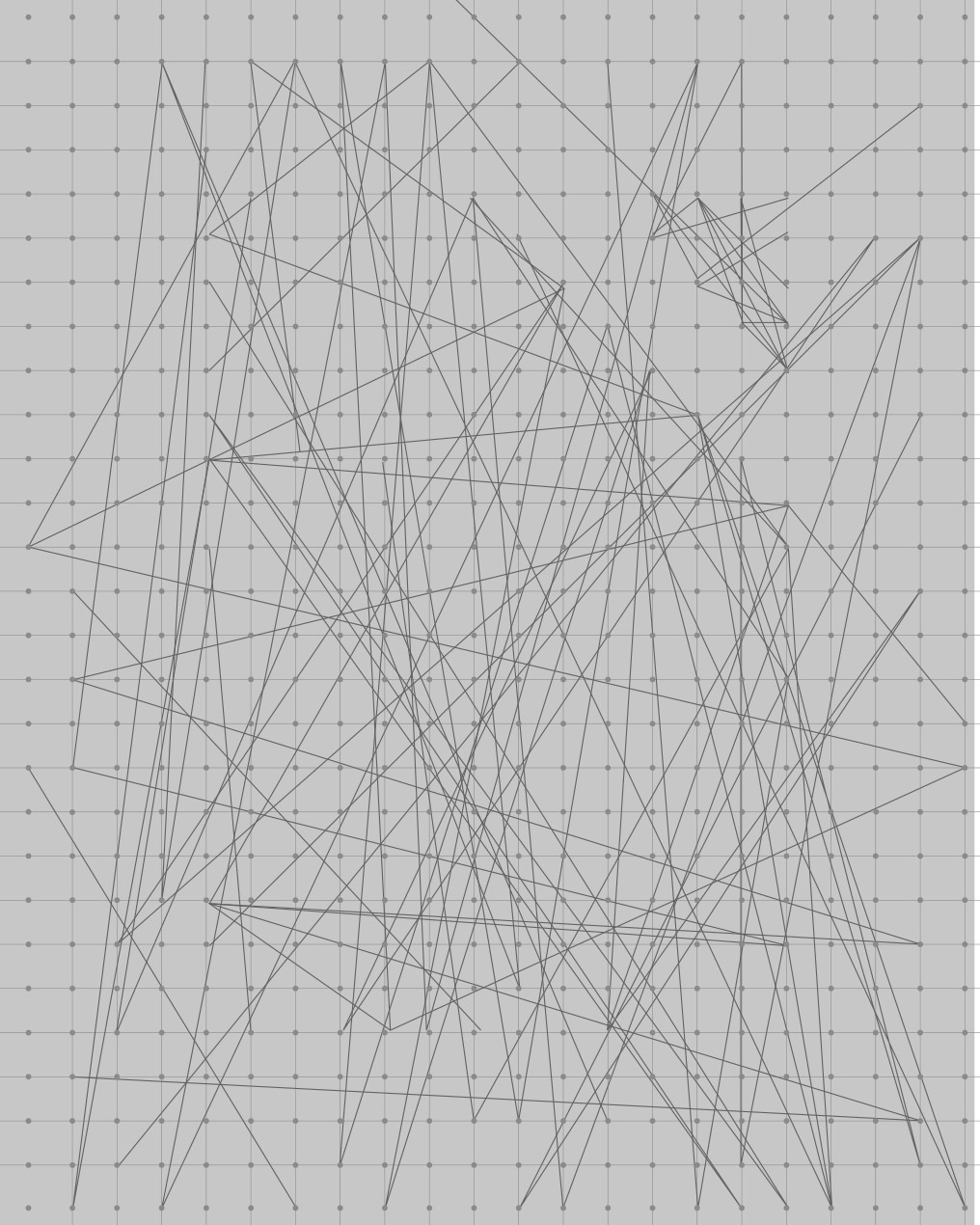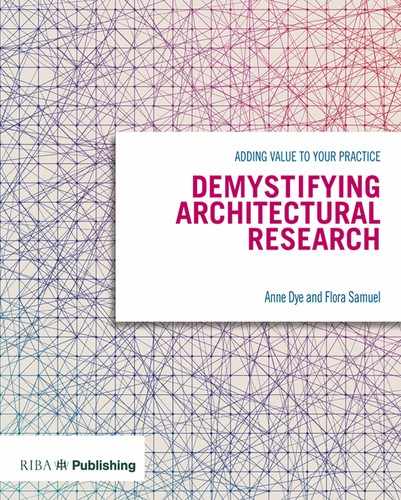
Conclusion
We wanted to create a book that showed the diverse nature of architectural research practice across the UK as an inspiration to others. It has been a pleasure in doing so to tease out the often unsung, but deeply impressive, research skills of professionals working at the top of their game. It has been our aim to illustrate that if the work of innovative practitioners can be translated into the more formal interdisciplinary language of research, then architectural research practice will be alive and well.
In 2012 we undertook a survey of research in practice that revealed that 43 per cent of practitioners believed themselves to be doing at least some research.1 The rest believed that research was a good thing both for business and for their own professional satisfaction, but were unsure how to begin. They generally associated research with energy and performance or with the more esoteric aspects of theory; they did not see the connection with the way in which reflective practitioners try to make better buildings that are appropriate to their users, clients and context. As Leon van Schaik has observed ‘Architects have come to believe that to do “Research” they have to stop practising and adopt arcane rituals and pseudo-objective writing styles.’2 One of the aims of this book has been to dispel this myth. To do research is to work through a problem systematically and reflectively and then, ideally, to disseminate the results of that research.
The structure of this book derives from another of our research projects funded by the Arts and Humanities Research Council, this time on the Cultural Value of Architects in Homes and Neighbourhoods. We wanted to develop an evidence base for the value of architects’ skills in generating well-being; however, our first hurdle was to define what those skills were. We realised that architects often appear to be at odds with one another because they are each working in very different value systems. We defined these as cultural value, social value, commercial value and technical value. Obviously there are overlaps in these systems, but we suggest that most architects have a dominant sphere of operation and use particular methodologies that relate to investigations in that sphere.

Identifying the ideology behind your work is really the first stage in defining methodology, a word that many practitioners find alarming, but is really just about saying as clearly and self-critically as possible what it is you do and why. Architecture as a field suffers from the fact that both practitioners and academics often operate with an unspoken set of rules learned through years of largely vocational training, and exposure to ‘Archispeak’. It is this that makes the field so opaque to others, and has contributed to its marginalisation from the creation of the built environment, policy, research, society and dinner party conversation.
We argue that it is the lack of research culture in practice that has led to the state of affairs we are now in, where we are largely unable to prove, in a language convincing to policymakers, funders and others that architects actually make a difference. The situation is not helped by our professional journals, whose focus is not generally on research. We need to work together as a field to generate an evidence base of our value to be used when bidding for work, when applying for research funding, when arguing for or against planning and when fighting for a better-quality built environment. In response to the Social Value Act 2013 we need to be able to evidence the added social value of our schemes. We need to be able to state loud and proud the importance of architects’ unique problem-solving skillsets.
Time of course is the issue in all this – time and money – but we would argue that architects already spend so much time on competitions with pitiful odds of success that they would be better off spending at least some time working on research projects – often with far greater chances of success, less risk, huge intellectual reward and the opportunity to develop a distinct practice offer. One of our motivations in writing this book was to encourage practitioners to bid for the €800 billion of Horizon 2020 funding currently available through Europe to address what they call the grand societal challenges – well-being, energy and so on – clearly within our remit. Another source of funding is through Innovate UK, for whom the primary criterion for success is showing that the practice will derive a business benefit from that research – and there are many more examples. We also want practitioners to go for funding as it is good business practice to have multiple income streams, making them less vulnerable to the vagaries of the construction industry. Additionally, and more importantly, research funding enables practitioners to work on ethically motivated projects that are not subject to the pressures of private finance. In many cases the first step in securing funding is finding an experienced academic researcher in an appropriate field to work. We are fully aware that our often inward-looking universities are also part of the problem, and we are currently working to develop a community of academics able and willing to support practitioner research across Europe.
Identifying the Ideology Behind your Work is Really the First Stage in Defining Methodology
All the practitioners included in this book derived value from their research, many of them economic value, and some were even paid to do the research by their clients. Research is, for example, central to the work of URBED who recently won the £250,000 Wolfson Prize for activities in this area. Research is written into the new RIBA Plan of Work, and is part of an expanded menu of services offered, for example by Architype. If you look at the homepage of Foster + Partners they clearly state that they are a research practice, and the Building Futures report The Future for Architects? suggested that specialised consultancy is the way forward. Research also carries a zero VAT rating, and has the potential to impact positively on insurance premiums, CDM and the pre qualification process.
One of the Prerequisites for Funded Research is Dissemination
One of the prerequisites for funded research is dissemination, something that practitioners often find particularly hard for a variety of reasons, not least because they are worried about losing their intellectual property. Without dissemination – without being able to identify innovation in a particular area – practitioners spend a great deal of time reinventing the wheel. Alarmingly, in the course of writing Architects and Research-Based Knowledge, we discovered that architects were more likely to consult their peers or Google than they were to use rigorous research findings.3 We are fully aware that it is extremely difficult for practitioners to keep abreast of research developments, quite apart from the kind of technical innovation that is sometimes published in the annexes to the industry journals. Research journals will shortly become open access, which will help the flow of information, and they are not as turgid and technical as they used to be; we do however need to do more to disseminate our findings.4
The creative industries are set to take over from the financial sector as the foremost generator of income for UK plc, but within this architecture is experiencing a decrease in its market share. Architects, particularly SME practitioners, need to take a strategic step back to look objectively at why this is happening. All the evidence suggests that the problem resides in a lack of research leadership across the profession, a lack of systematic testing and evaluation of projects, and deficiencies in the ways in which architects demonstrate and communicate the value of their work. Only through research can practitioners make consistent improvements both in their outputs and the way in which they are communicated. Only then can the profession be what it set out to be, the strategic leader of the construction team and a force for good in wider discussions of the built environment.
We finish with a quote from Bentre Frost, mayor for city planning for Copenhagen, often called the world’s most liveable city; ‘Without the many studies from the School of Architecture, we politicians would not have had the courage to carry out the many projects to increase the city’s attractiveness.’5
